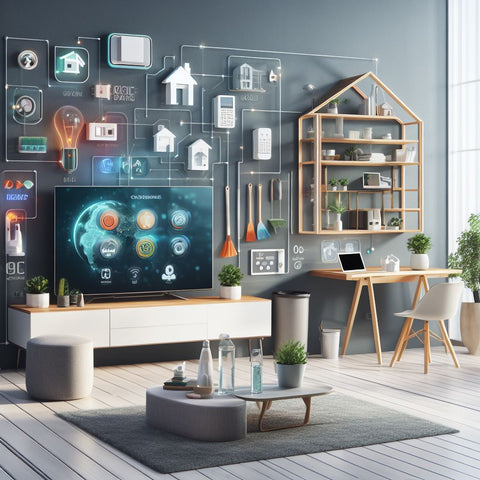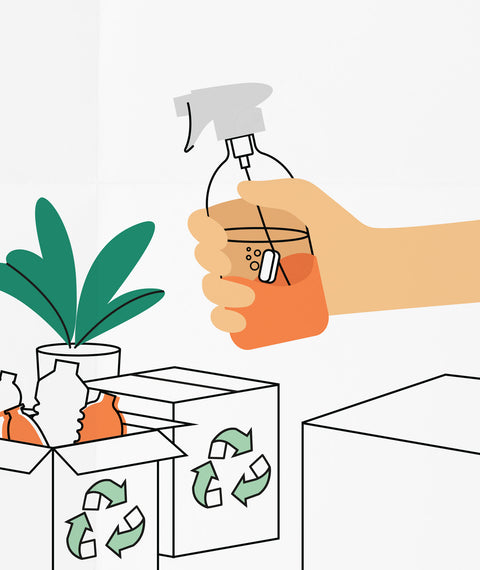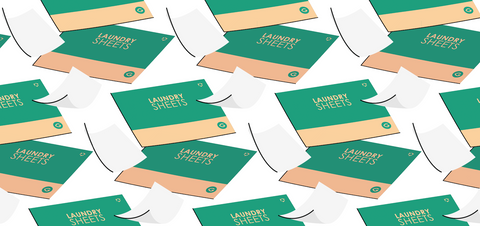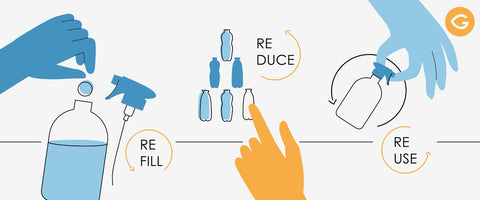Cleansing with Consciousness: The New Age Paradigm
In today's world, where every purchase can contribute to an environmental footprint, there has been a profound shift toward sustainable living and cleaning. More people recognize that each cleaning choice is not just about hygiene but also a reflection of our commitment to the planet. Gone are the days when cleaning was a mundane routine; today, it's a conscious decision, a lifestyle choice that speaks volumes about our eco-ethics.
Historically, cleaning practices often overlooked the environmental consequences. Powerful detergents that washed away grease also found their way into water systems, causing harm. Now, with a deeper understanding of such implications, many individuals opt for products and practices aligned with nature. This evolution is no longer a niche trend but a global movement, uniting people in their quest for cleaner homes and a cleaner world.
Eco-Evolution: The Journey from Conventional to Green Cleaners
Cleaning agents have come a long way. Traditional cleaning products, with their harsh chemicals, were once household staples. They promised and delivered impeccable cleanliness, but often at a significant environmental cost. As years went by, the detriment these chemicals caused to our waterways, soil, and air became more apparent. Enter green cleaners: a revolution inspired by nature, driven by consumer demand. These eco-friendly alternatives promised cleanliness without compromise. Infused with natural ingredients, these products reduced harm to both the environment and our health. With more brands hopping on the green cleaning bandwagon, consumers now have a plethora of options, ensuring that sustainable cleaning is accessible to all. According to the U.S. Environmental Protection Agency (EPA), volatile organic compounds (VOC) in cleaning products can affect indoor air quality and also contribute to smog formation in outdoor air.
Decode the Label: Ingredients to Embrace and Avoid
Decoding the label on cleaning products can be a daunting task. Traditional cleaners often contain ingredients like ammonia, bleach, and phosphates - effective in cleaning but harmful to the environment. These ingredients, when washed down our drains, pose threats to aquatic life and can disrupt natural ecosystems. On the brighter side, the surge in green cleaning options has introduced us to effective and gentle ingredients. Substances like citric acid, derived from citrus fruits, provide excellent cleaning capabilities without the harsh impact. Similarly, essential oils, not only add a delightful fragrance but also bring their antimicrobial properties to the mix. By choosing products with these green ingredients, consumers can ensure their cleaning routine is truly eco-friendly. A report from BBC Science Focus mentions that even after passing through water treatment plants, small quantities of chemical compounds from cleaning products can find their way into rivers, ponds, and lakes, having adverse effects on aquatic life. For a deeper dive into the ingredients used in our products, visit Greenargen's ingredient page.
Concentration Over Clutter: The Water-Soluble Revolution
Space-saving, waste-reducing, and equally effective, water-soluble cleaning tablets are leading a revolution in sustainable cleaning. The concept is genius: instead of shipping water, which is heavy and increases carbon footprints, these tablets require users to add water at the point of use. This approach drastically reduces plastic waste from bottles and lowers CO2 emissions from transportation. Moreover, these tablets often contain concentrated cleaning power, ensuring that your surfaces sparkle without the need for excessive products. With fewer bottles cluttering your cabinets and reduced trips to the store, it's a win-win for both the environment and consumers. For more on water-soluble solutions, check out Greenargen's laundry sheets.
Bulk Buys & Refills: A Step Towards Zero-Waste Cleaning
Beyond water-soluble tablets, another trend is gaining momentum: bulk buying and refills. By purchasing cleaning products in bulk, consumers can significantly reduce the amount of packaging waste. Refill stations, popping up in stores across the globe, allow users to bring their containers, reducing the demand for new plastic bottles. This model not only promotes recycling but also instigates a mindset shift. It nudges consumers to be more mindful, fostering a culture where waste is frowned upon, and sustainability is celebrated.
Harnessing the Power of DIY: Nature's Own Cleaning Arsenal
Nature has its own set of powerful cleaners. Ingredients commonly found in our pantries, like vinegar and baking soda, have been used for generations as cleaning agents. Essential oils, from tea tree to lavender, can provide antimicrobial properties and a pleasant scent. While DIY solutions can be incredibly effective, it's essential to strike a balance. For tougher stains or specialized cleaning, eco-friendly store-bought products might be more suitable. However, for daily cleaning chores, DIY solutions can be both effective and satisfying.
Reducing, Reusing & Recycling: The Cleaning Tools Edition
Sustainable cleaning isn't just about the products but also the tools. From brushes made of sustainable bamboo to reusable cleaning cloths, the options are plentiful. Investing in quality tools that last longer reduces the constant need for replacements, cutting down on waste. Old t-shirts can be repurposed into cleaning rags, and worn-out toothbrushes can serve as excellent scrubbers for nooks and crannies. With a bit of creativity, the lifespan of many products can be extended, proving that sustainability and resourcefulness often go hand in hand.
Tech Meets Eco: Innovative Gadgets that Promote Green Cleaning
Innovation drives sustainability. As technology advances, we're witnessing the rise of gadgets that not only simplify cleaning but do so sustainably. Robot vacuums equipped with HEPA filters, UV sanitizers that eliminate the need for chemicals, and water-saving devices are all testament to this merger of tech and eco. These gadgets, while efficient, also underscore the broader trend: as society becomes more eco-conscious, industries must adapt, ensuring that even our most advanced devices honor our commitment to the planet.
The Road Ahead: Predictions for the Future of Green Cleaning
The trajectory of green cleaning is clear: upward and forward. As consumers become more informed and industries more innovative, we can anticipate a future where green cleaning isn't just an option but the norm. From sustainable packaging to formulations that prioritize planetary health, the cleaning industry will continue to evolve. Consumer activism will play a pivotal role. By supporting eco-friendly brands and demanding transparency, consumers can steer the industry in the right direction, ensuring a cleaner, greener future for all.




